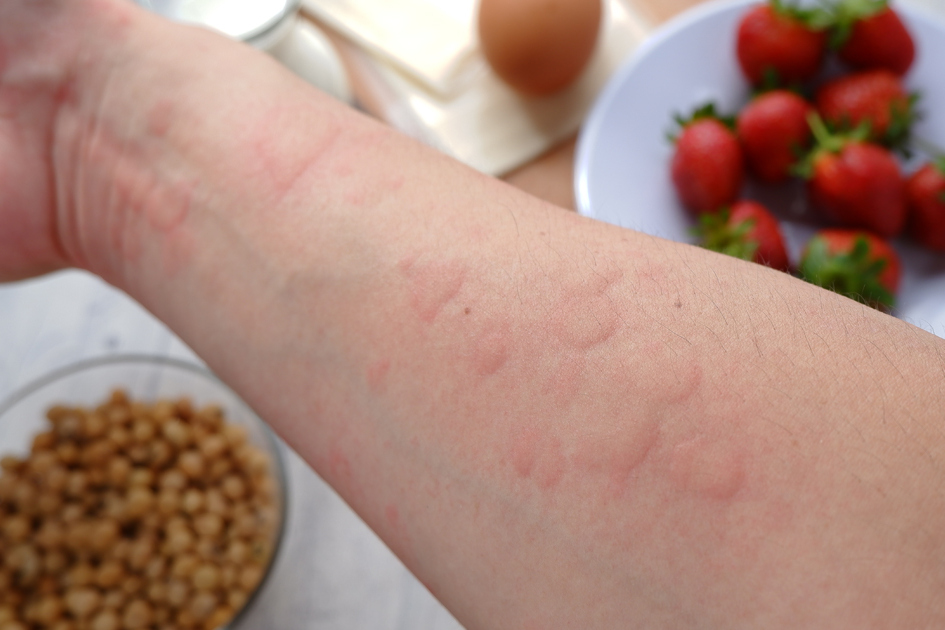The increase in the frequency of allergic diseases has been supported by literature data for a long time. Our own experience also confirms the fact that the frequency of these pathologies has increased significantly in the last couple of decades. This includes atopic diseases mainly accompanied by skin symptoms, pollen allergies with respiratory symptoms, and food allergies causing a wide spectrum of gastrointestinal symptoms.
With the arrival of summer, complaints caused by urticaria, which are not rare anyway, become more common. The possible reasons behind this and actions to be taken are summarized below.
Against the background of hives
In addition to contact allergens, respiratory allergens, food allergens, drug allergies, and insect bites, there may also be lesser-known causes, such as significant exposure to the sun during vacation or increased sweating as a result. Making a diagnosis is partially made difficult by the foreign environment: pollens that we have not encountered before, contact allergies from suntan oil or disinfectants in the water during swimming pool use. Hives or a similar skin rash can of course also be caused by a viral or bacterial infection.
First, however, it is necessary to clarify what acute hives means?
It may come as a surprise, but the literature considers hives that become symptom-free within 6 weeks (!) to be acute. Chronic urticaria is hives that occur almost every day for longer than 6 weeks.
Causes of acute hives:
- Virus infection
- Bacterial infection
- Food allergy
- Contact allergy
- Respiratory allergy (cross-reaction)
- Drug allergy vaccination
- Insect bite
- Physical urticaria
- Onset of chronic urticaria
(The table is the work of the author)
A few clues can help you find the root causes
A febrile state draws attention infectious origin Respiratory allergy manifests itself more often in hay fever symptoms (runny nose, tearing, sneezing, nasal congestion, mouth and nose itching), and less often causes hives. Contact allergy obviously causes complaints on the part of the body affected by the compound (in the case of sun oil, the smeared body surface and the palm). We usually remember insect bites
the name suggests, physical urticaria is triggered by various physical effects (cold, heat, pressure, sunlight, vibration damage, water-sweat). Urticaria caused by pressure appears after a few minutes to hours (e.g. in the line of a tight belt, after elbowing on the exposed forearm, after prolonged sitting), and disappears quickly. Cold urticaria usually occurs in young and middle-aged adults. It occurs locally in the area exposed to the cold stimulus, e.g. in cold wind on the face, but in summer it can also occur after drinking a cold drink. Sun allergy (not sunburn) accounts for 1% of all hives.
In the case of a food allergy , it is not easy to give a firm opinion, as a clear case is rare. The timing of the symptoms can be a clue, as food allergies appear a few minutes after eating the food, and complaints occurring hours later are very rare. At the same time, it makes our job more difficult that several types of nutrients enter our body at the same time. It happens, of course, that the person only eats one type of thing (e.g. peanuts), in which case the diagnosis is not difficult. In case of suspected food allergy, it is of course appropriate to focus on the more common allergens, adding, however, that in principle we can be allergic to everything (with the exception of clean water at body temperature). It is also worth noting that there is a difference between childhood and adult allergens.
In childhood , milk, eggs, peanuts, soy, nuts and peanuts are the most common, in adulthood, peanuts, walnuts, hazelnuts, soy, fish and "seafood".
We note here that we avoid dietary supplements, dyes, artificial flavor enhancers and preservatives whenever possible, as all of these are considered new environmental allergens.
It is not absolutely necessary to consult a doctor due to a mild hives that pass spontaneously. In addition to the unpleasant, frightening, fast-spreading symptoms, throat scratching, tightness, and a lumpy feeling can indicate a threatening anaphylaxis, in which case treatment in the Emergency Department is necessary.
And finally, we will once again make an attempt to dispel a misconception
The international urticaria guideline does not recommend performing routine diagnostic tests in case of acute urticaria. First of all, according to statistics, every person has some of these episodes in their life. In these cases, the symptoms persist for a few hours or days, they depend on treatment or spontaneously, and they do not appear more than once. On the other hand, even with the most thorough examinations, the root cause can only be found in 20-30% of cases. Therefore, an examination is not necessary in the case of a probable infection, insect bite, contact rash caused by a chemical, or a drug allergy (but we always inform our attending physician that we have had a probable allergic reaction to a specific active ingredient in the past). However, in the case of acute urticaria caused by food, especially in children, efforts should be made to determine the allergen. And, of course, the situation is completely different in the case of chronic urticaria lasting longer than six weeks, where there may be a systemic cause behind it, which is why its investigation is mandatory.
Author: Dr. György Temesszentandrasi












